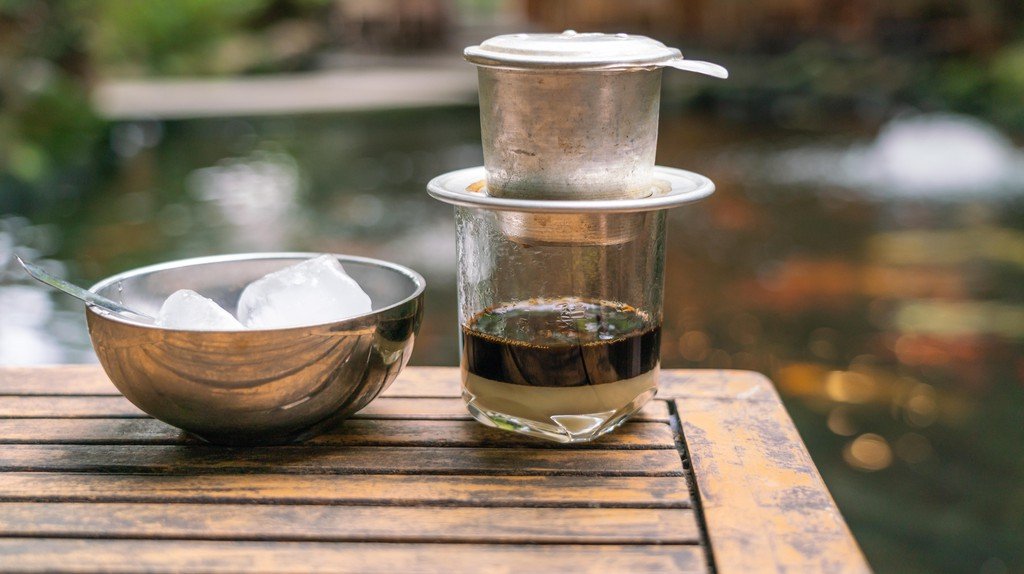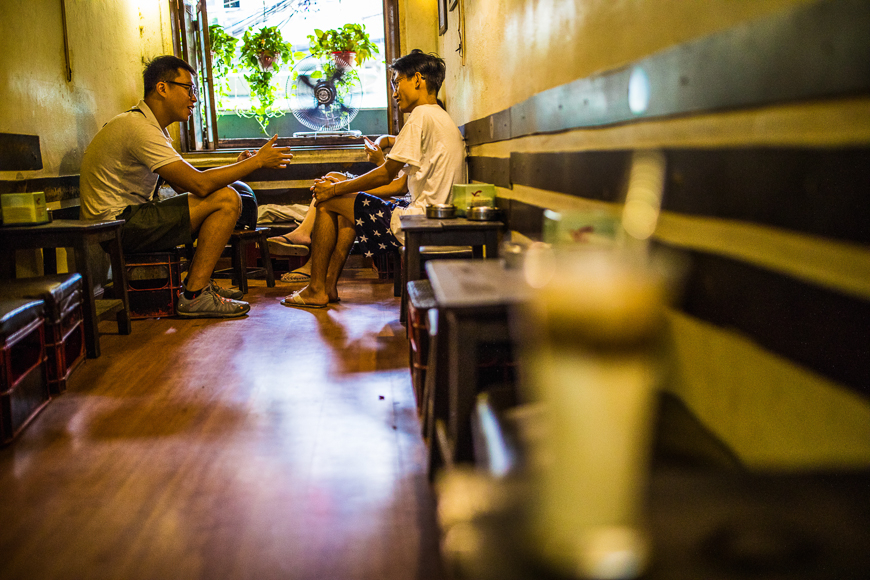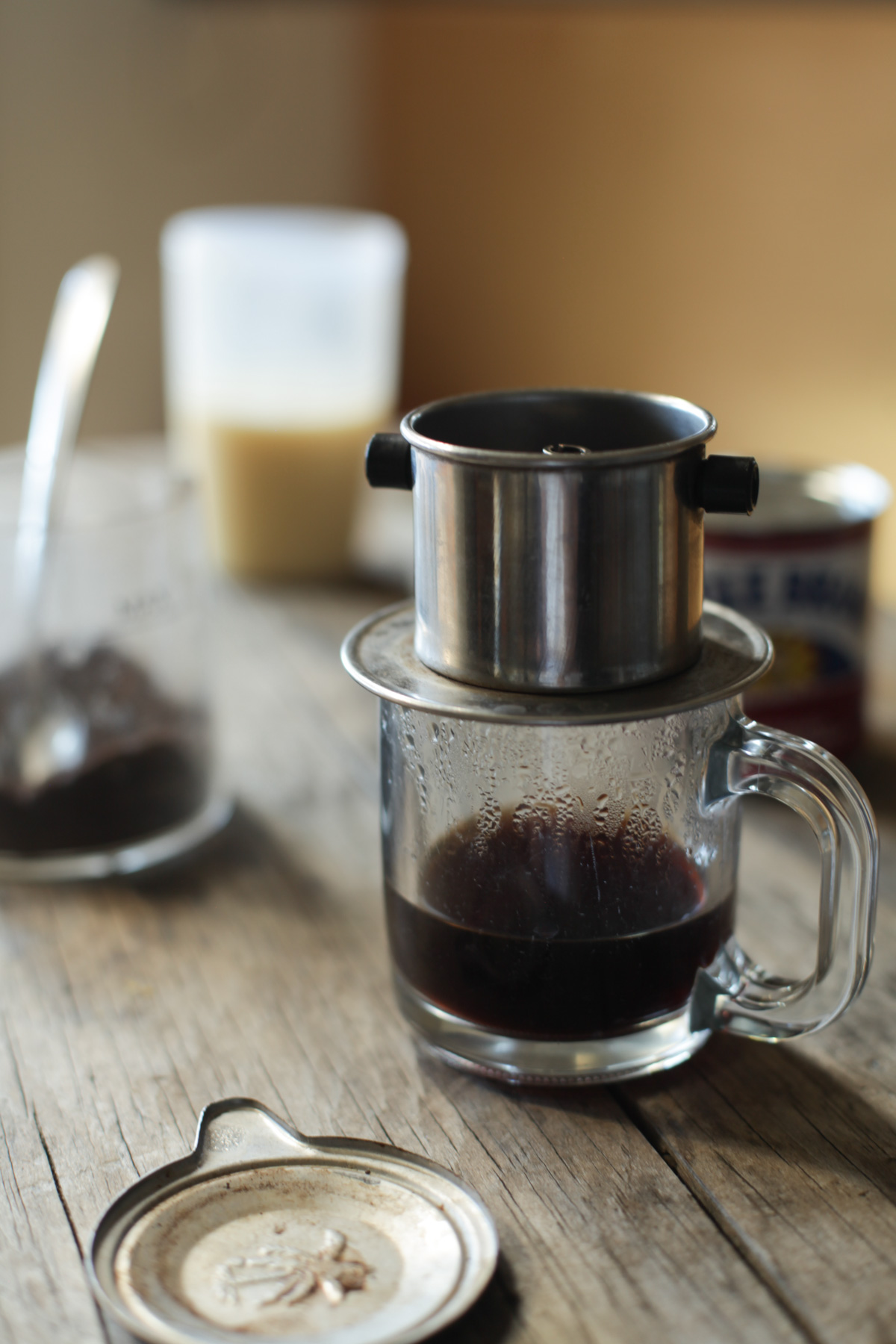
World Tour: Vietnam
Our exploration of the global coffee community and traditions continues this week with a trip to Vietnam to check out another unique coffee tradition. On our journey we take a look at the emergence of coffee as a cultural phenomenon and how the Vietnamese have made this drink, truly their own.
Introduced to Vietnam by the French in the late 19th century, coffee has blossomed into both a cultural centrepiece and a highly traded commodity. Vietnam is currently the second largest producer of coffee, after Brazil, a result of a coffee boom that occurred in the 1980s and 90s. Vietnam’s coffee production focuses primarily on the Robusta variety, in large part because it is easier to grow than its Arabica counterpart. Robusta also contains about twice as much caffeine, has lower sugar content and, as a result, can be quite bitter. Because of these traits, Vietnamese coffee is commonly exported for use in instant coffee, or used for very dark roasts (think Italian Roast profiles, or even darker is the eponymous Vietnamese Roast). Though for some, the idea of a darkly roasted coffee might seem unappealing, the Vietnamese have found a way to make their Robusta coffees a truly delightful taste experience.
When French colonists brought the coffee plant to Vietnam, they also brought along their version of café culture. As cafes and coffee consumption as a social past-time evolved, so did Vietnamese ingenuity. A shortage of fresh milk, necessary for the café au lait, led to the search for an alternative to temper the flavour of the often bitter, darkly roasted beans. Enter sweetened condensed milk.
This long-lasting sweet, thick milk quickly became a staple in Vietnamese coffee and remains part of the experience today. Vietnamese coffee perfectly combines a slowly brewed, dark, concentrated cup of coffee with sweetened condensed milk for a rich and satisfying beverage. Often served iced to help beat the heat, this drink is consumed morning, noon and night. The highly caffeinated drink is best sipped slowly, both to avoid over-caffeination and to savour the flavours of the sweet drink. That being said, the extra caffeine seems to have limited impact on its consumer as people in Vietnam get together with friends and family at all hours to enjoy the ritual of drinking coffee. Though you can get a cup in a hurry if need be, taking time to enjoy the slow brewing and drinking process is central to the overall experience.

So how is this delightful drink made? Although not as technically involved as other brew methods, such as the V60 pour over, this relatively simple brewing method still takes time and care. To make a Vietnamese coffee, add darkly roasted coffee into a phin, a small metal cup and filter brewer that sits right over your mug. Distribute the coffee evenly across the bottom brew chamber of the phin, and then screw down the press to keep the coffee secure. Gently pour a small amount of water just off the boil over the press to saturate and expand the grounds. Creating this bloom slows down the brew time to achieve the rich texture and flavour synonymous with Vietnamese coffee. Once the coffee blooms and is saturated, pour in the rest of the water, and replace a lid on top of the chamber to keep the water hot.
Brewing coffee in the Vietnamese way is not to be rushed. As the water filters slowly through the phin, the brewer can enjoy a few moments of contemplation and anticipation at the rich cup about to be served. The combination of the slow brew of the phin and the darkly roasted Robusta beans makes for a thick velvety serving of coffee. Though it lacks the complexity of an espresso, Vietnamese coffee is similarly concentrated, and this brew really shines when combined with sweetened condensed milk. This can be added either to the bottom of your cup or mixed in after your brew is ready.
In Vietnam, you can experience a range of artfully crafted coffees, and unique variations on the drink. If you’re low on fresh milk, now may be just the time to experiment. Try brewing your coffee stronger than usual and adding a little sweetened condensed milk to your next cup. We recommend Turbo Espresso, as it pairs seamlessly with the sweetened condensed milk and highlights the silky caramel notes. You can always experiment with making a more concentrated cup using a moka pot, Aeopress or whatever you have to work with. If you’re feeling particularly adventurous, try out an egg coffee, famous in Hanoi, add a dash of cinnamon on top, or try a coffee with yoghurt! Let your imagination run wild! You never know, it may become an internet sensation. After all, as many of us are learning first hand, necessity is the mother of invention.
Written by: Alison MacDonald
Sources:
Doutriaux and C. Geisler, “Competing for Coffee Space: Development-Induced Displacement in the Central Highlands of Vietnam” Journal of Rural Sociology, 2008 pp. 528-554.
Huy, “How to Make Vietnamese Coffee”, Hungry Huy. web, 21 April, 2020.
Spiegel, Alison. “What Vietnamese Coffee Culture Gets Right, Beyond Sweetened Condensed Milk”. HuffPost Taste. 06-12-2017. Web. 21-04-2020.